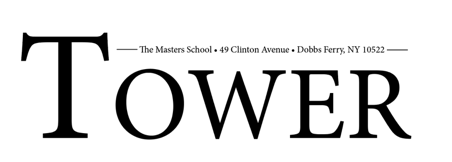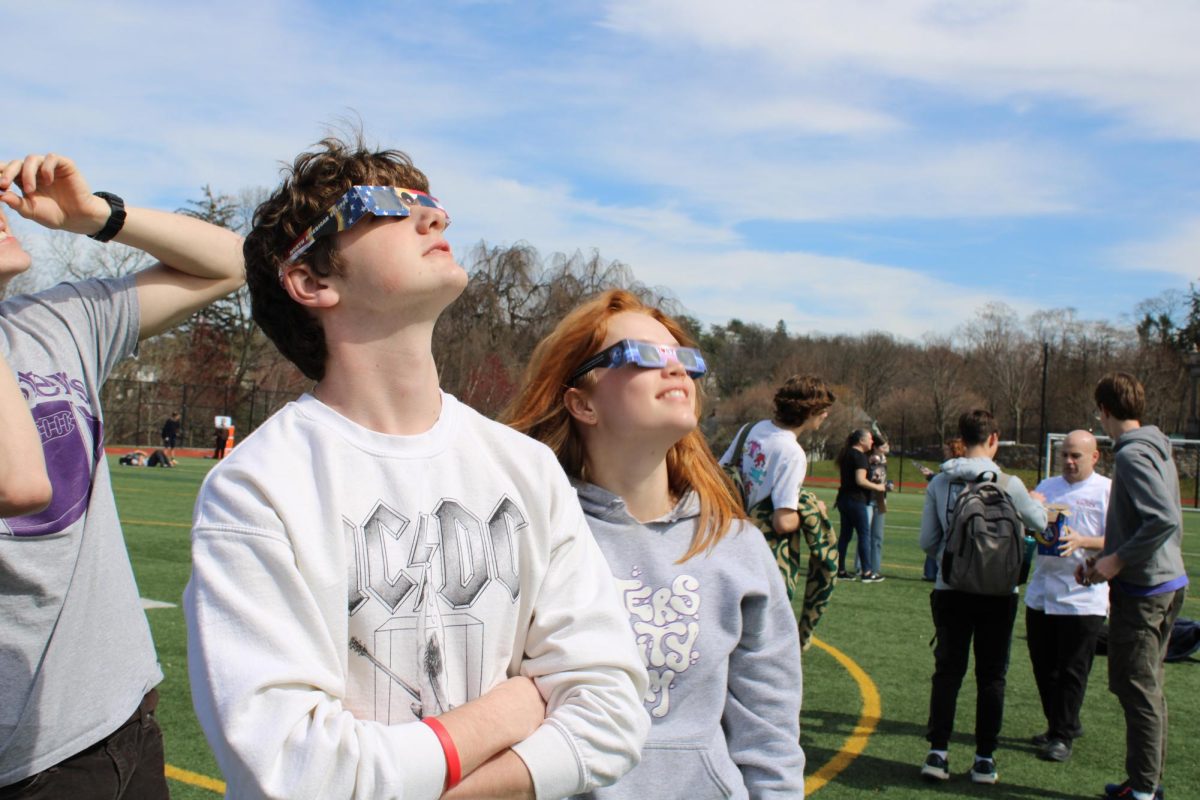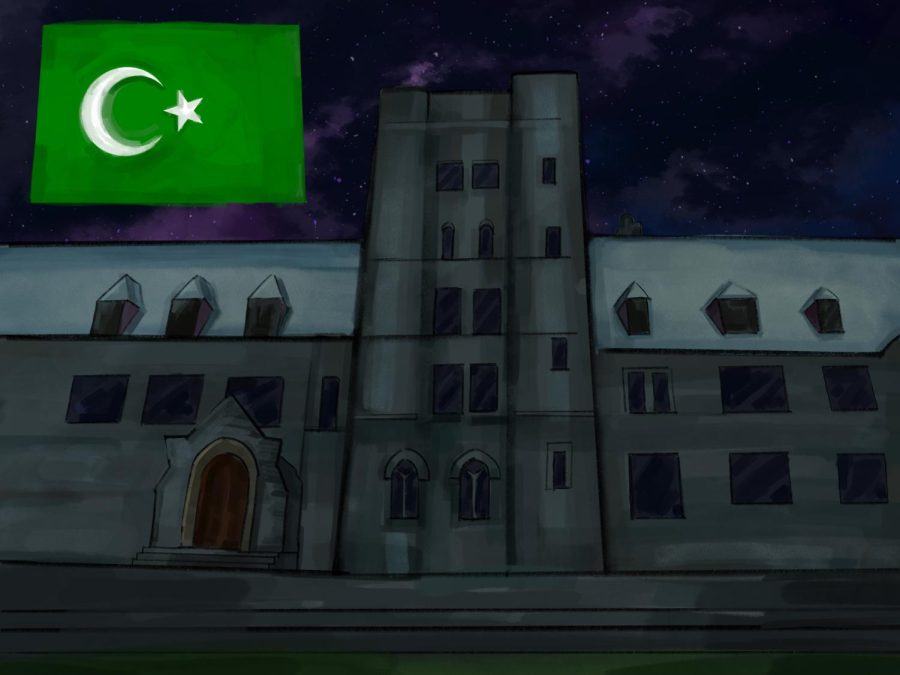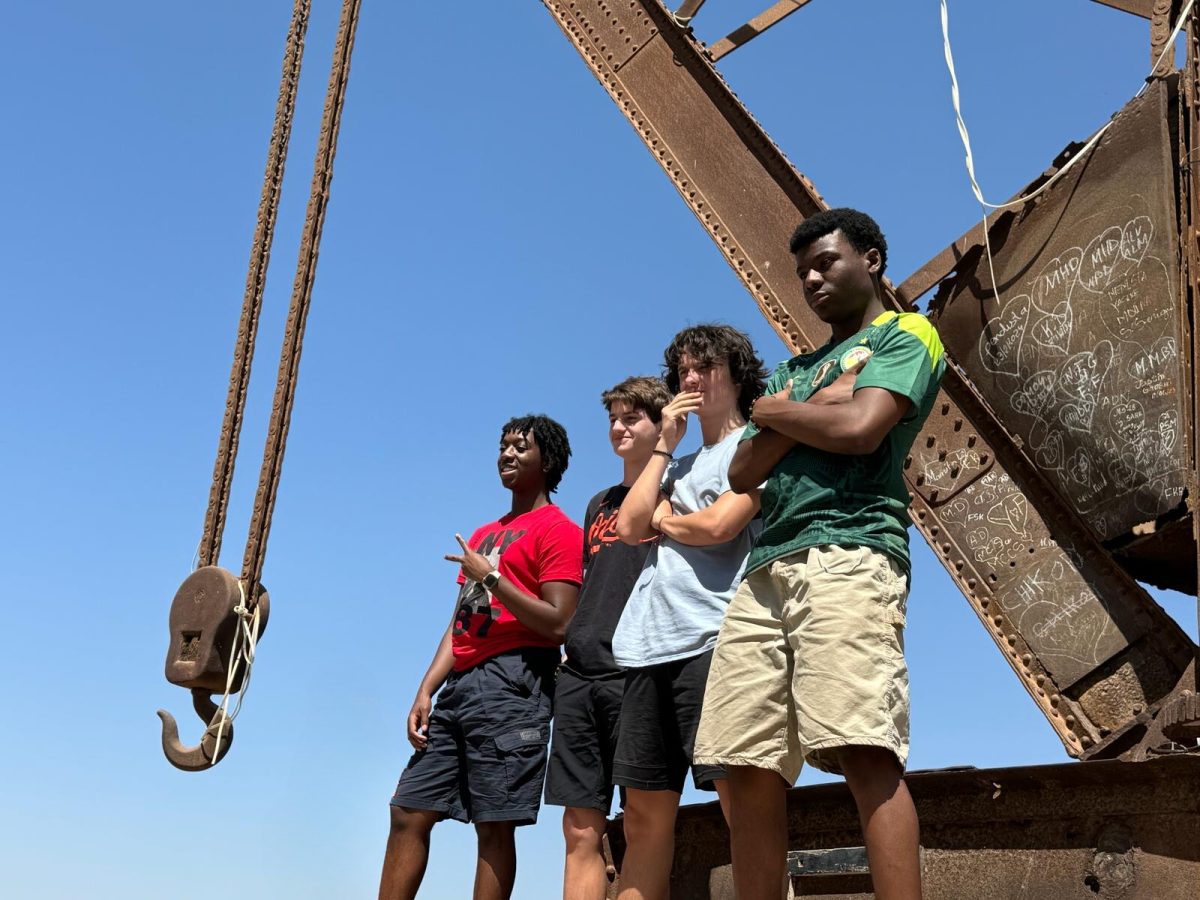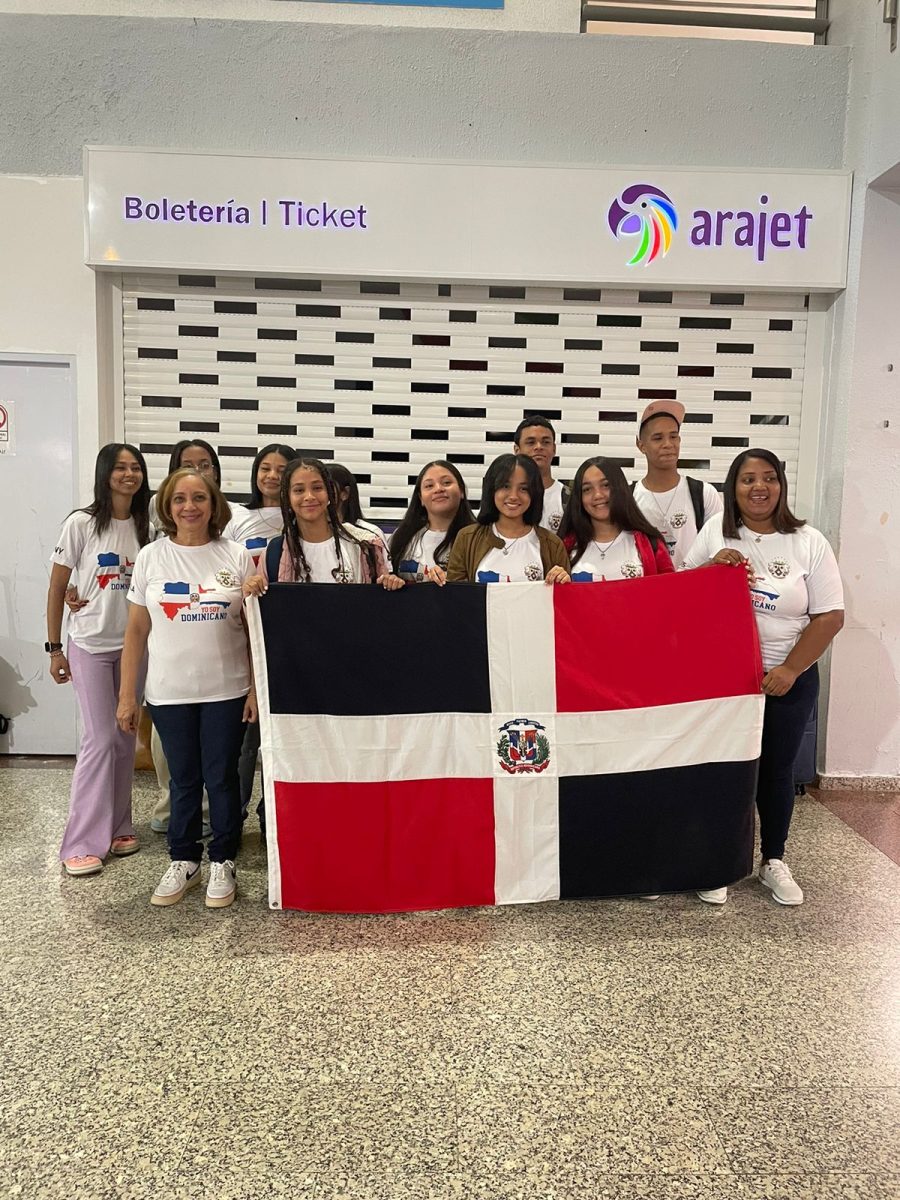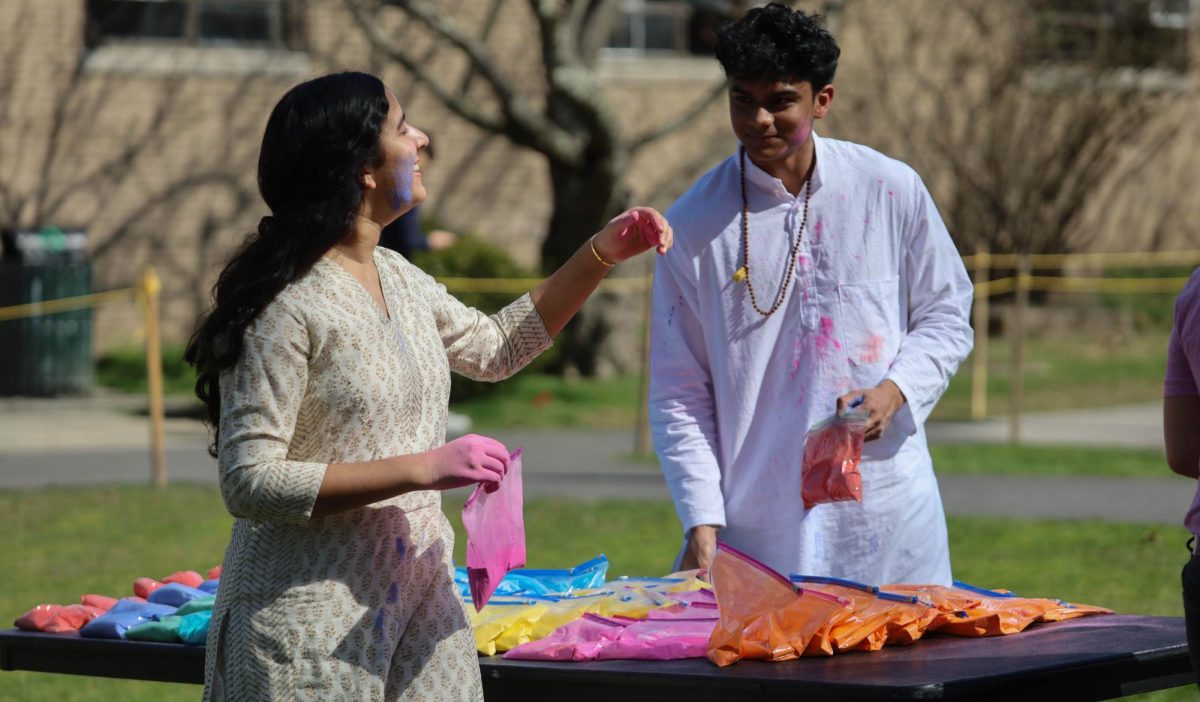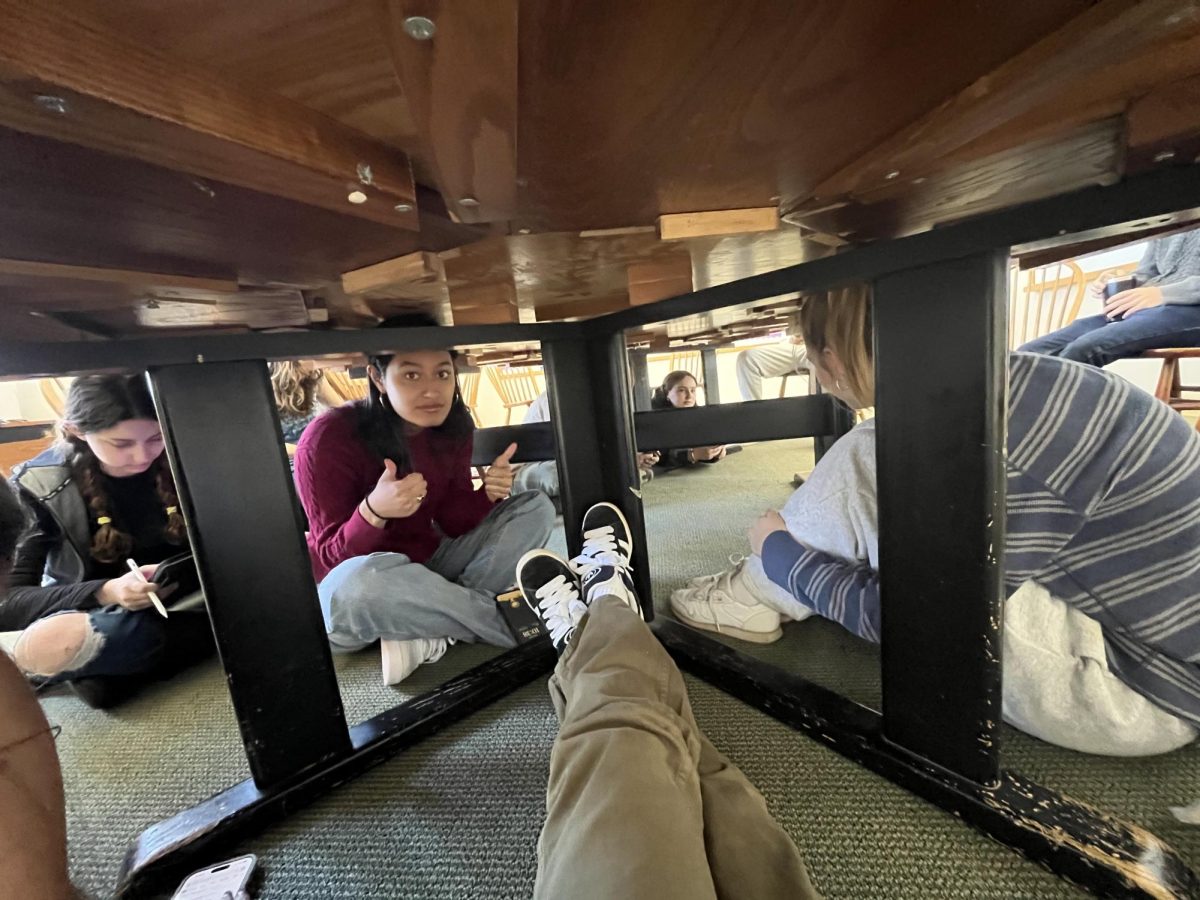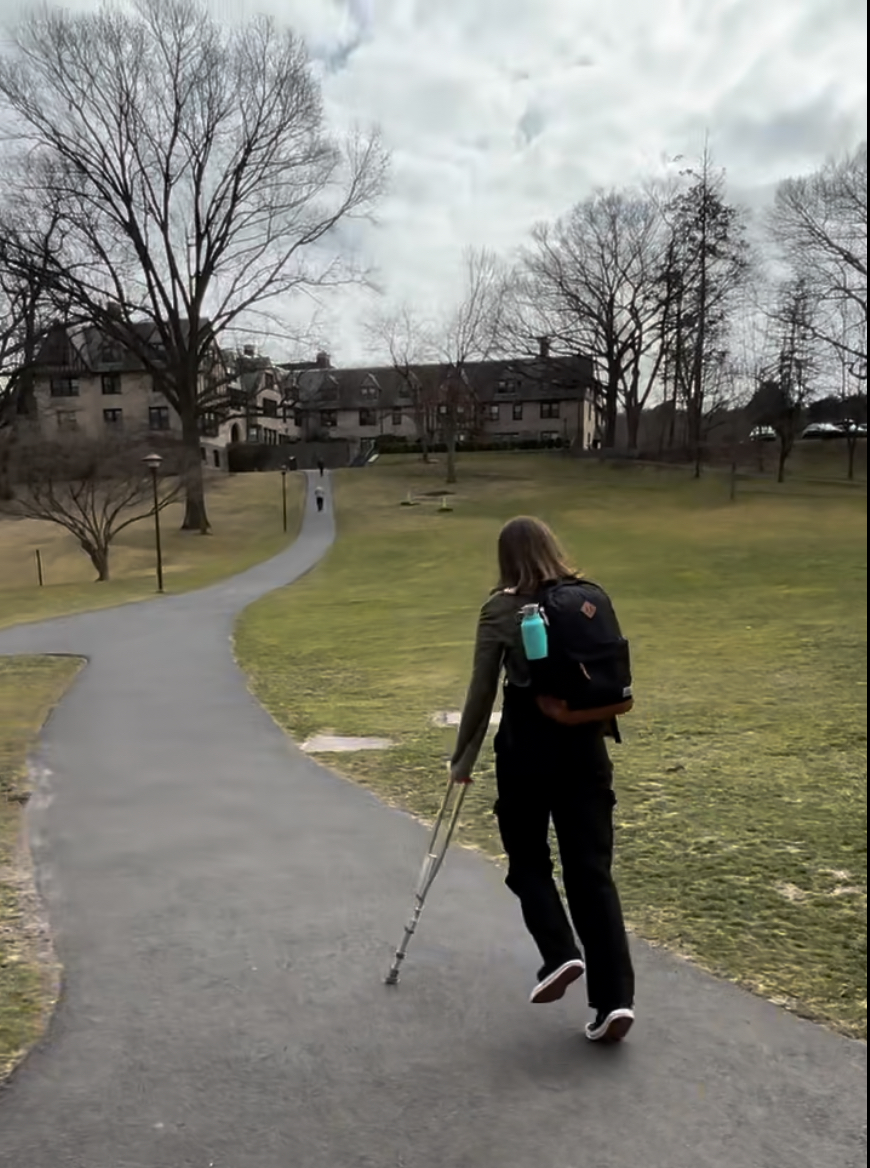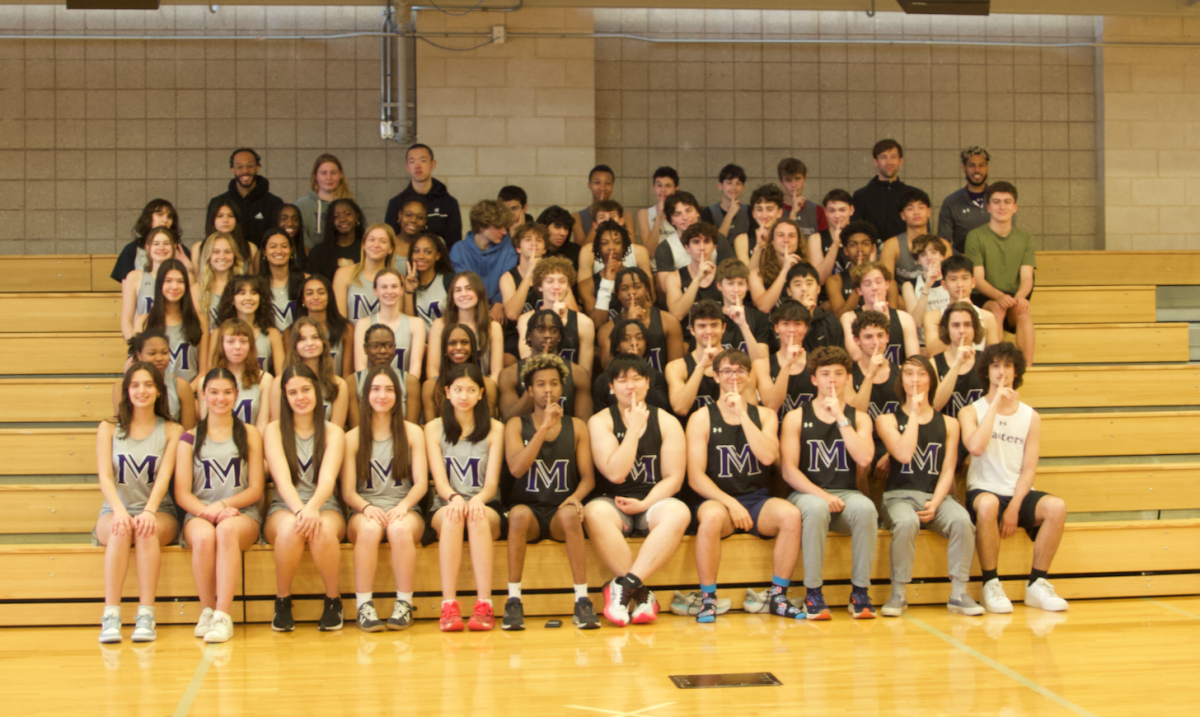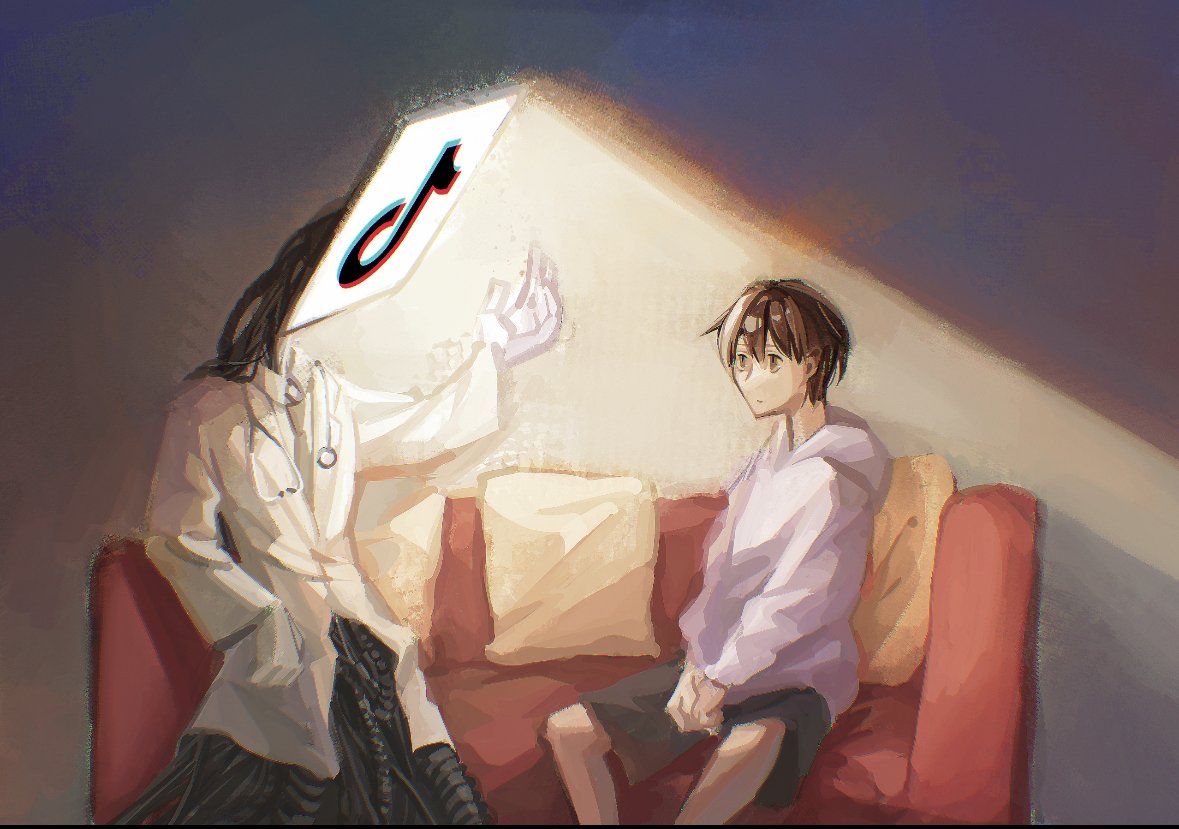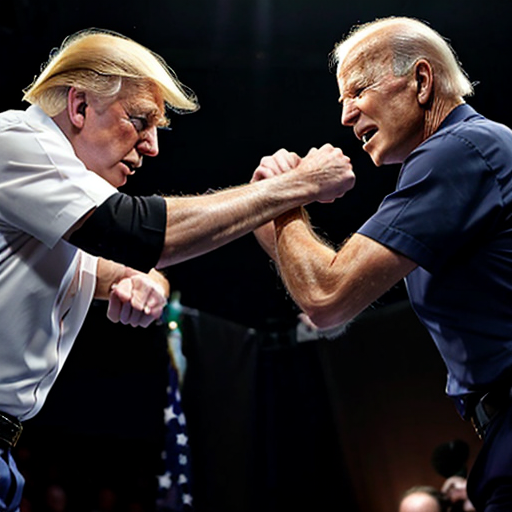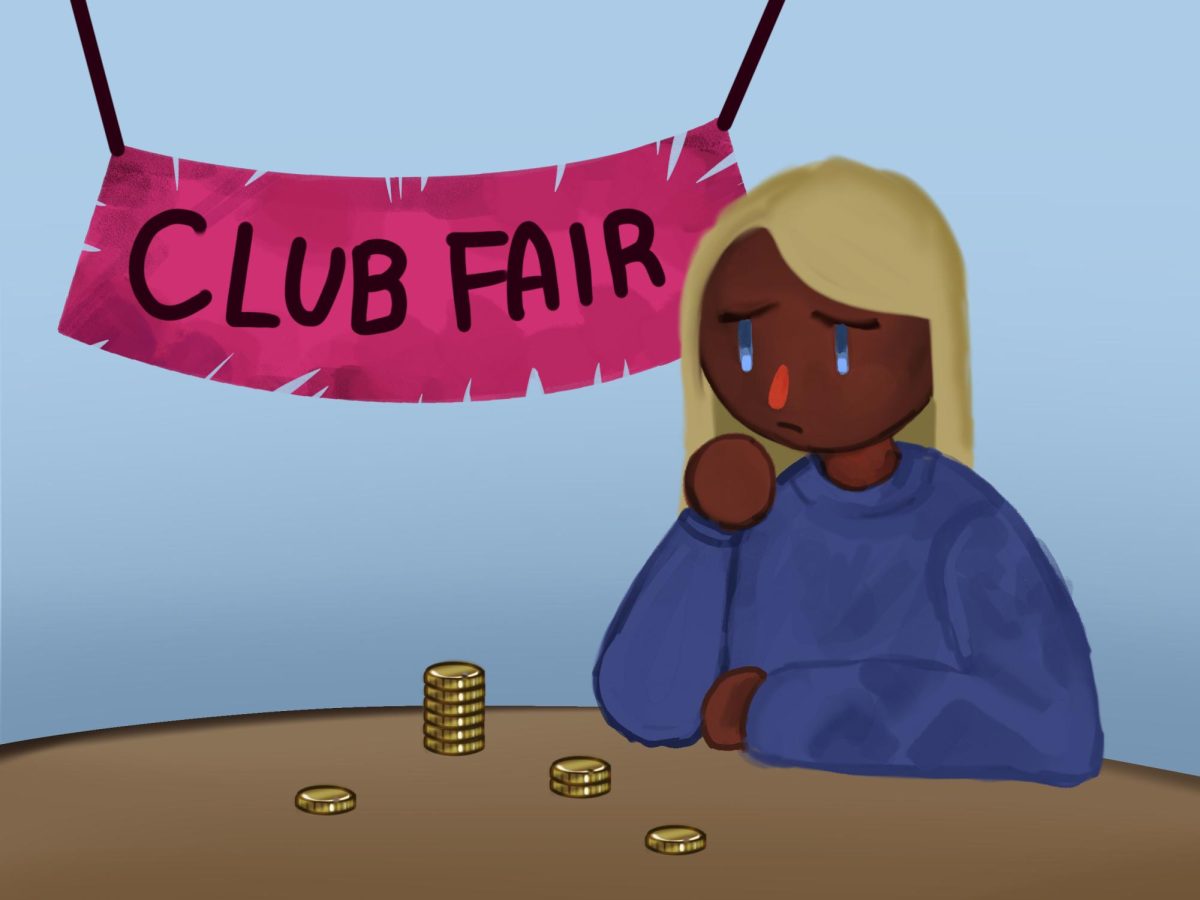At 3 p.m. on April 8, Middle School students were taken down to Greene Field where Moon Pies were given out and moon-themed music played. They were joined by Upper School students just minutes later. According to eighth grade science teacher Morghan Lewis, the planning began last June. She explained that the Greene Field was chosen specifically because of the unobstructed view of the sky. Earlier that day eclipse glasses were handed out by advisory, of which many were afterwards put in donation boxes to be sent to schools in South America for their eclipse in October.
This was all made possible with the initiative of sixth grader Eli Goldfine, who got his first telescope when he was 5. Now, he is the head of the youth division of Westchester Amateur Astronomers (WAA). He gave a presentation to the Upper School about the eclipse in the weeks prior — a partial solar eclipse in which the moon obscures 91% of the sun.
Goldfine said, “It doesn’t come at a set interval. The last eclipse [in America] was in 2017 (a partial eclipse in New York), the next isn’t until 2044, but then there will be another in 2045.”
Goldfine worked with numerous teachers to ensure that the Masters community could participate. According to him, 850 eclipse glasses had been donated by a family, and they were given out on Greene Field the day of the eclipse.
Sixth grade science teacher Daniel Russo stored the glasses while Lewis helped Goldfine set up his presentations in the Middle and Upper School. Masters also listened to presentations from NASA volunteer Bob Kelly, the vice president of field events for WAA and a former meteorologist for the Environmental Protection Agency.
Kelly visited the school on April 1 to speak about how to watch the eclipse safely as well as provide some more details on the eclipse itself. Kelly and Goldfine are both members of WAA, which is how Goldfine knew Kelly was an eclipse ambassador and reached out to see if he was willing to visit campus.
Goldfine has been a member of the club since he was 8, when he joined during COVID-19. Founded in 1986, the not-for-profit club hosts star parties, lectures and conferences. Despite all the events taking place in New York, members are from all over the world.
It’s super cool because the eclipse comes only every few decades. It’s a great opportunity.
— Lena Paull
By 3:15 p.m. on eclipse day, everything was in full swing. Students were craning their necks towards the sun or dancing in circles. Some teachers had found chairs, and many were taking photos with their eclipse glasses covering the lens. Nine minutes before totality, the music turned off. Freshman Lena Paull said, “It’s super cool because the eclipse comes only every few decades. It’s a great opportunity.”


